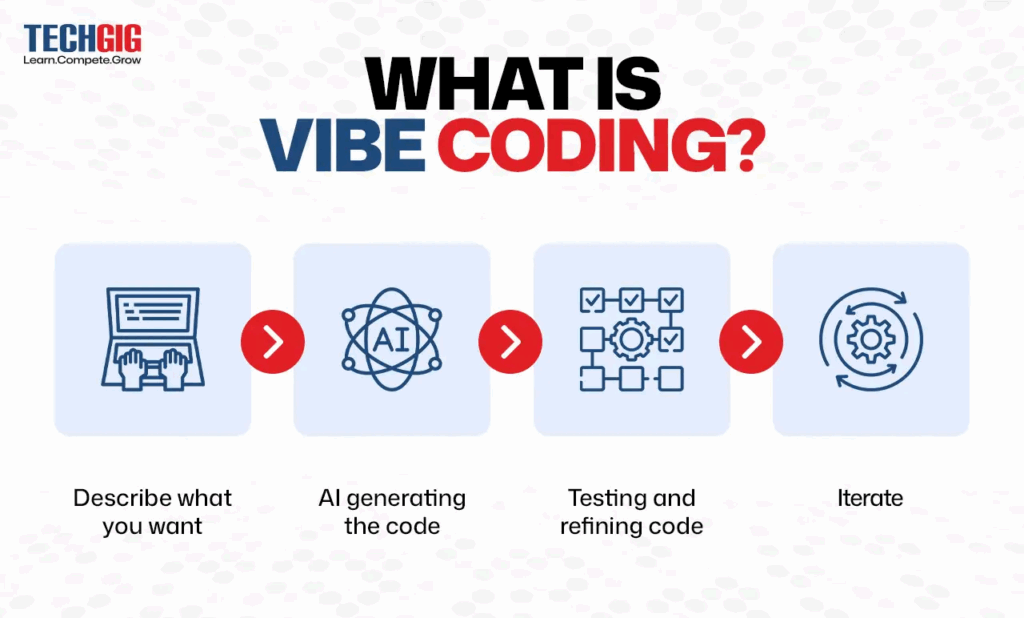Amazon Web Services (AWS) has launched Kiro, a fresh AI-powered tool designed to streamline vibe coding — the process of interacting with AI chatbots to generate code through conversational prompts. Vibe coding is popular for its ease and fluidity, but it often lacks structure and clarity. AWS aims to solve this with Kiro’s professional approach that combines planning, documentation, and real-time developer assistance.
What’s Happening & Why This Matters

Kiro enables developers to outline their project requirements upfront clearly. The AI then creates a technical design document that guides development. While coding, Kiro acts like an “experienced developer,” catching mistakes and handling routine tasks. It even performs quality assurance checks at the end.
Amazon built Kiro on Anthropic’s Claude Sonnet 4, with Claude Sonnet 3.7 as backup. The tool is currently in preview and free to use, with future pricing plans including Free, Kiro Pro ($19/month), and Kiro Pro+ ($39/month). It’s also free for Amazon Q Developer Pro users, AWS’s existing AI coding assistant subscription.
Kiro competes with other AI coding tools, including Cursor, Windsurf, Microsoft GitHub Agent Mode, and Google’s Gemini Code Assist. Notably, Google recently acquired Windsurf’s CEO after failed talks with OpenAI to buy Windsurf for $2.4 billion.

By offering a structured processes to turn vibe coding into production-ready software, Kiro can improve how developers collaborate with AI. It clarifies assumptions and documents decisions, helping teams avoid common AI coding pitfalls.
The Rise of Vibe Coding
Vibe coding revolves around iterative, conversational prompts with AI. It’s fun and fast, but often results in fuzzy requirements and undocumented decisions. A study showed that vibe coding might slow down experienced coders by 19% due to its unstructured nature.
Kiro addresses these problems by incorporating project planning and documentation upfront. Developers input detailed specifications, enabling the AI to generate more reliable and transparent code. This method reduces guesswork and ensures the code meets explicit requirements.

Real-Time AI Collaboration
Kiro’s AI agent works alongside human developers, much like a senior engineer. It spots errors early and automates routine tasks, boosting productivity and code quality. Once coding wraps, Kiro runs automated checks to ensure the software meets expectations.
AWS emphasizes that creating working code isn’t enough; understanding AI assumptions behind the code matters too. Kiro’s documentation feature bridges this gap, making AI-generated software easier to maintain and scale.
A Competitive AI Coding Market
Unlike typical AWS launches, Kiro’s marketing is subtle, with only a small AWS logo. The company is deciding whether to integrate Kiro fully into AWS or offer it as a standalone product.
Kiro faces stiff competition. Microsoft’s GitHub Agent Mode offers a similar AI-assisted coding experience. Google’s Gemini Code Assist also targets this space. Kiro differentiates by combining AI coding with upfront planning and detailed documentation.
Amazon’s work on Kiro dates back at least to May 2025. Early reports positioned Kiro as an ambitious step in formalizing AI-driven coding workflows. Its pricing plans accommodate hobbyists and professionals.

TF Summary: What’s Next
Amazon Kiro bolsters the AI developer tools arena with a modified take on vibe coding. By adding project planning, documentation, and real-time collaboration, it promises to make AI coding more reliable and transparent.
Developers and competitors should follow how Kiro impacts software development workflows. Its success depends on pressuring rivals to improve their AI coding assistants with comparable features. For now, Kiro offers an intriguing path from casual AI coding to professional-grade software creation.
— Text-to-Speech (TTS) provided by gspeech


